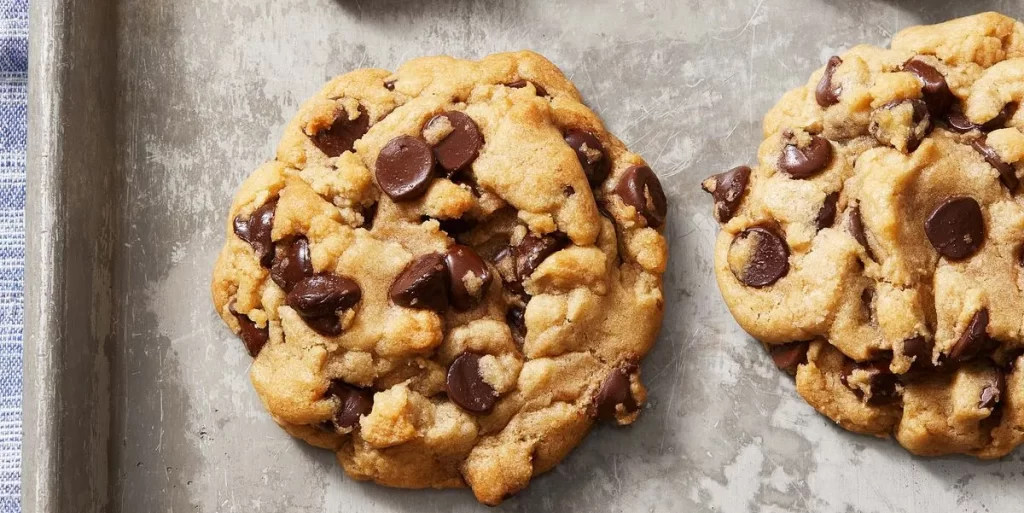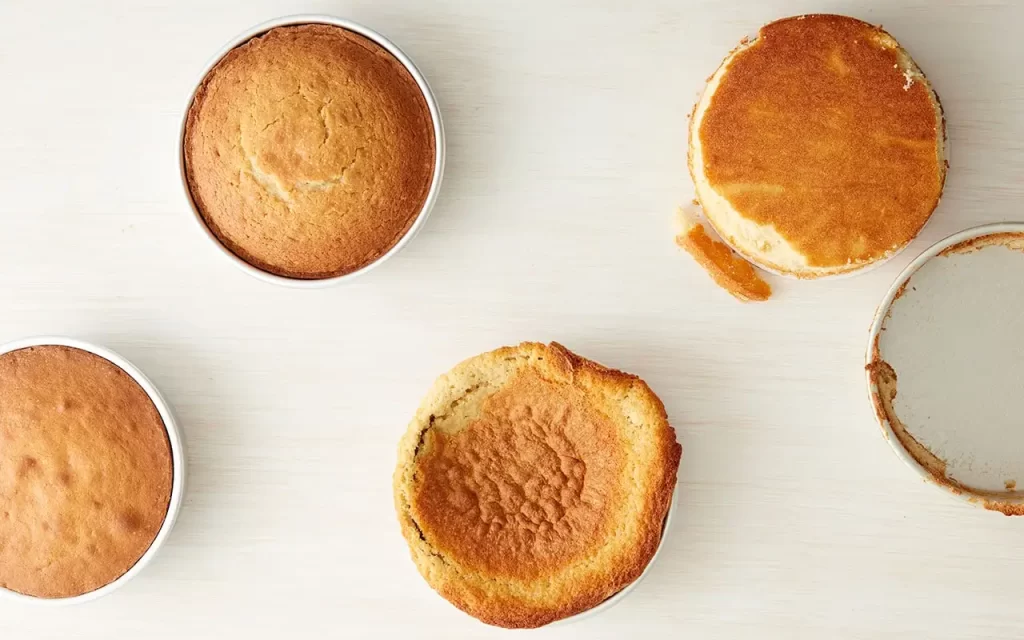Contents
- 1 Understanding the Science Behind High-Altitude Baking
- 2 Challenges of High-Altitude Baking
- 3 Adjusting Ingredients for High-Altitude Baking
- 4 Tips for Successful High-Altitude Baking
- 5 High-Altitude Baking Tools and Equipment
- 6 Popular High-Altitude Baking Recipes
- 7 High-Altitude Baking Resources and Communities
- 8 High-Altitude Baking Troubleshooting
- 9 Final Tips for Mastering High-Altitude Baking
- 10 Author
Welcome to the fascinating world of high-altitude baking, where art and science converge to create culinary delights. Baking at high altitudes presents a unique set of challenges that require a delicate balance of creativity and precision. With every rise and fall of the dough, the elevation plays a role in transforming ordinary ingredients into extraordinary creations.
Understanding the Science Behind High-Altitude Baking
High-altitude baking is certainly not for the weak. It is a complex, interesting science that requires an in-depth understanding of how the atmosphere behaves at high elevations. As the altitude rises, the air pressure drops and the boiling point of water drops. All of this greatly affects baking. One of the key difficulties is maintaining an appropriate balance between leavening and building texture.
With reduced air pressure, gases expand more, and the cake or bread will rise more, which can cause it to collapse. Understanding how baking powder and yeast work is essential at high altitudes. One more factor is that with low air pressure rate , moisture evaporation will be faster . It will lead to baked products that are dry and crumbly. It will be necessary to adjust the liquid content of the recipe in accordance to retain the moistness and present finished goods that are not too dense.

Challenges of High-Altitude Baking
Baking at high altitudes presents even seasoned bakers with challenges that can be hard to solve. One major problem is over-rising, followed by collapsing of cakes and bread. The air pressure being lower means that the gasses will quickly expand, resulting in an inflated structure that lacks structural support. The texture is another challenge that needs to be solved. The atmospheric pressure at high altitudes is lower, which means that the moisture in baked goods will evaporate quickly.
Finding a balance between the moisture and crumbs in the final product is one of the key factors to focus on. The flavor profiles of your bakes will also be affected when working at high altitudes. Lower air pressure results in flavors becoming more concentrated. This will mean that your bakes will out differently than they would at sea level.
Adjusting Ingredients for High-Altitude Baking
High-altitude baking requires baking times of higher accuracy and proportional adjustment to the recipes since the specific conditions of higher elevations can easily spoil the entire bake. There are some general rules to follow:
1. Increase the amount of flour. This way, the high-protein content in the flour will reinforce the gluten network, making it stronger to not develop and rise and then collapse.
2. Increase the liquid consumed in the recipes. Since liquid is faster to evaporate because of the reduced pressure, the baked food will lose moistness; hence, the liquid content needs to be increased to protect moisture.
3. Reduce the sugar. Sugar is subjected to the same conditions as flour; thus, too much consummation of sugar would create a cloying sweet taste and a softer texture of the bake.
4. Decrease the leavener. Since the rising process is ironically even faster because of the change in pressure, leaveners like powder or yeast should be used in smaller quantities.
5. Increase the salt. Since high altitudes trade good taste for quantity and corporal integrity, salt should be slightly increased.
Tips for Successful High-Altitude Baking
While adjusting the ingredients is essential, there are several other tips and tricks that can help ensure successful high-altitude baking with wdbos:
1. Test and learn: High-altitude baking is a journey of experimentation and learning. Start with small batches and make note of the adjustments you make to the recipes. Keep track of what works and what doesn’t, so you can refine your techniques over time.
2. Use a thermometer: Invest in an accurate oven thermometer to ensure that your oven temperature is consistent. Fluctuations in temperature can have a significant impact on the baking process at high altitudes.
3. Preheat and reduce baking time: Preheating your oven thoroughly is crucial for high-altitude baking. The initial burst of heat helps set the structure of the baked goods before they rise too much. Additionally, reduce the baking time slightly to prevent over-browning or drying out.
4. Use high-quality ingredients: High-altitude baking requires precision, and using high-quality ingredients can make a difference. Fresh ingredients will contribute to better flavor and texture in your final product.
5. Join baking communities: Connect with other high-altitude bakers through online forums and communities. Sharing experiences, tips, and troubleshooting advice can help you navigate the challenges of high-altitude baking more effectively.
High-Altitude Baking Tools and Equipment
High-altitude baking can be easier with the right tools and equipment. Therefore, when considering high-altitude baking, you might need to invest in the following items: high-quality baking pans that do not warp and help distribute heat evenly to eliminate any inconsistent results, even while baking in high elevations. A digital scale that accurately appoints all the ingredients cannot be missed when recalibrating one recipe to another.
Your batter or dough will need implementation, so a stand mixer or a hand mixer will be needed for that job too. An oven thermometer comes in handy to reduce the chances of burning and prevent the risk of unnet brownies due to an inaccurate oven. Cooling racks would be useful for cooling down your baked goods while receiving equal amounts of cool get rid of the water.
Popular High-Altitude Baking Recipes
Now that you have a solid understanding of the science and techniques behind high-altitude baking, it’s time to put your skills to the test with some popular recipes. Here are a few crowd-pleasers that are known to excel at higher elevations:
1. Mile-High Chocolate Cake: This decadent chocolate cake is moist, rich, and perfectly suited for high-altitude baking. The adjustments in ingredient ratios and baking time ensure a stable structure and intense chocolate flavor.
2. Fluffy Buttermilk Biscuits: Achieving light and fluffy biscuits at high altitudes can be a challenge, but this recipe has been perfected for those elevated kitchens. The slightly adjusted leavening agents and precise baking time result in tender and delicious biscuits.
3. Almond Macarons: These delicate and elegant French treats can be a bit tricky to master, but with the right adjustments for high-altitude baking, you can achieve beautiful macarons with the perfect chewy texture and airy centers.

High-Altitude Baking Resources and Communities
As you continue your high-altitude baking journey, it’s helpful to tap into the resources and communities that are available. Here are some valuable resources to explore:
1. High-altitude baking books: There are several books dedicated to high-altitude baking that provide in-depth explanations, recipes, and troubleshooting tips. Some popular titles include “The High-Altitude Baking Book” by Patricia Kendall and “Pie in the Sky: Successful Baking at High Altitudes” by Susan G. Purdy.
2. Online communities and forums: Joining online communities, such as high-altitude baking groups on social media platforms or dedicated baking forums, can connect you with fellow bakers who are navigating the challenges of high-altitude baking. You can share experiences, seek advice, and learn from others’ successes and failures.
3. Local baking classes and workshops: Check if there are any local baking classes or workshops that focus on high-altitude baking. These hands-on experiences can provide valuable insights and guidance from experienced instructors.
High-Altitude Baking Troubleshooting
Even though you are very good at your craft and have learned the best techniques and resources for high-altitude baking, problems can be encountered. What are the common problems and suggestions that will help you out? The next recommendations will certainly help you out: your cakes collapse in the center. Consider reducing your leavening agents slightly and increasing the flour and liquid ratios for additional structure and moisture to support the rise. The texture of your cooking is too dry and crumbly. Adjust the amount of liquid used in the recipe to account for faster evaporation at high elevations; make sure that you are also over-baking your goods; they become too brown.
To prevent excessive browning, you may wish to reduce the oven temperature slightly, preheat the oven, or bake the goods for a shorter time period. During the last few minutes of baking, you may use aluminum foil to cover the top of the baked goods to shield them from browning. Flavor changes. The flavors in your recipes may alter when cooked in a high altitude. The recipe flavors for any baked product may intensify or dull. Use different flavor mixes and ingredients to complement the newly changed flavors in your high elevation baked products.
Final Tips for Mastering High-Altitude Baking
Congratulations! You have just started an exciting journey into the world of high-altitude baking. Thanks to the knowledge of peculiarities and necessary adjustments, you can confidently proceed to conquer the kitchen. However, do not forget that high-altitude baking is both a science and an art. Precise measurements and necessary adjustments are essential; however, feel free to discover unique flavors, fillings, and decoration strategies that will help you bring your baked goods to a new level.
Do not hesitate to take advantage of all of the available resources and be in touch with experienced masters. Start a new adventure with every batch, adjusting the algorithm, and do not lose motivation. Dear reader, good luck with creating incredible meals for people you love, and enjoy the process!
Also read: Becky G Unleashed: Charting the Sensational Journey of a Pop Powerhouse


